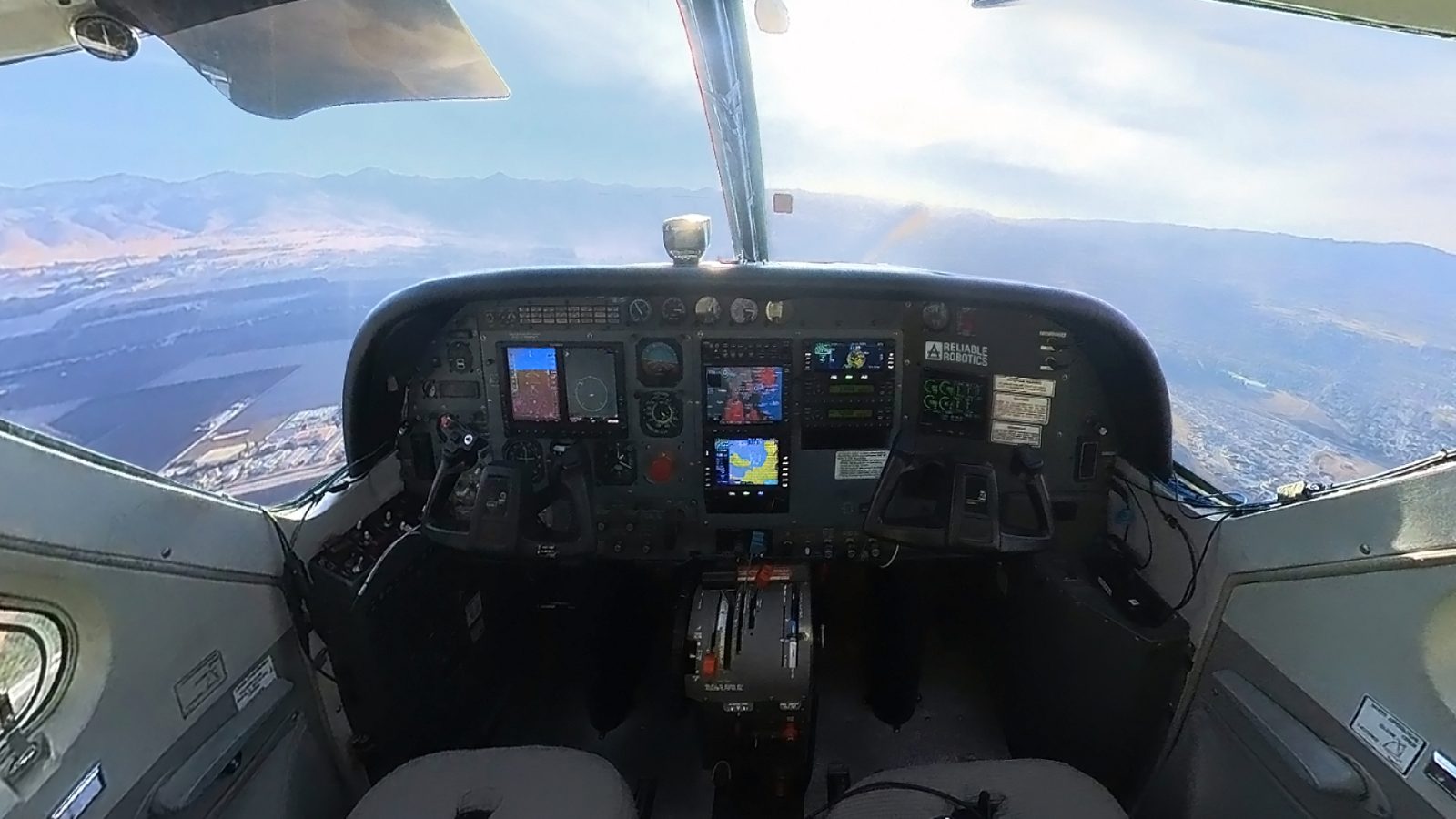
The future of autonomous piloting has come at least two steps nearer with news that two breakthrough trial flights were completed by different aviation tech companies – including one whose systems permitted a cargo plane to fly with nobody in the cockpit.
With advanced air mobility startups like Boeing’s Wisk developing their air taxis for autonomous operation from the outset, the specter of self-flying or remotely controlled operation has gradually come to be seen as a nearing inevitability. Yet there’s still an enormous amount of work to both develop tech to enable that, and test it until its reliability and safety has been proven. That’s why the two separate trials by Airbus Helicopters and California company Reliable Robotics are viewed as important and exciting.
The most recent of those was the announcement by autonomous aircraft systems specialist Reliable Robotics that its tech had enabled a Cessna 208B Caravan utility plane to fly with nobody onboard – the first time for a legacy craft, the company said. The test flight was carried out with a pilot overseeing automatic taxi, takeoff, cruising, and landing phases all from a post 50 miles away.
Having developed the system in cooperation with aircraft manufacturer Textron and aerial services group ASL Aviation, Reliable’s system is conceived to adapt to all kinds of planes, using overlapping levels of redundancy to ensure the reliability and security of uncrewed and autonomous flight.
It also includes applications to prevent the risks of controlled flight into terrain, and loss of control in flight – the two leading causes of airplane crashes.
The other aviation breakthrough came a continent away outside of Marseille, France, where an Airbus helicopter was flown using a combination of advanced autonomous flight tech and a simplified, tablet-based human-machine interface (HMI).
Unlike the Reliable Robotics mission, the series of Airbus helicopter test flights were conducted with pilots onboard as a backup to intervene – were that necessary – using the HMI to override the otherwise autonomous flights.
With further development, the system could be used for remote or fully independent operation, with the onboard Airbus tech already designed to detect unforeseen obstacles and automatically recalculate safe flight paths.
Trials of those applications run parallel to the autonomous and remotely piloted systems air taxi and cargo drone startups have developed to advanced stages. Potential uses of those are not only limited to the proliferating, very high rotation flights by small, battery-operated craft for future short-hop urban transport.
They’d also be useful to longer hauls in scenarios where onboard pilots would simply be baby-sitting planes otherwise capable of handling themselves or flown remotely – making humanitarian aid deliveries to remote sites, for example.
ASL Aviation chief executive Dave Andrew, says autonomous or remote flight tech would also facilitate establishing services to places currently considered too small or out of the way for companies to offer them with piloted craft.
“ASL is always innovating to better serve customers, and our partnership with Reliable Robotics is aimed at enabling us to provide reliable, flexible and cost-efficient time-sensitive cargo delivery to smaller unserved areas,” said Andrew. “This historic flight is a testament to Reliable’s focused leadership in advancing aviation innovation and capability for the industry.”
FTC: We use income earning auto affiliate links. More.



Comments